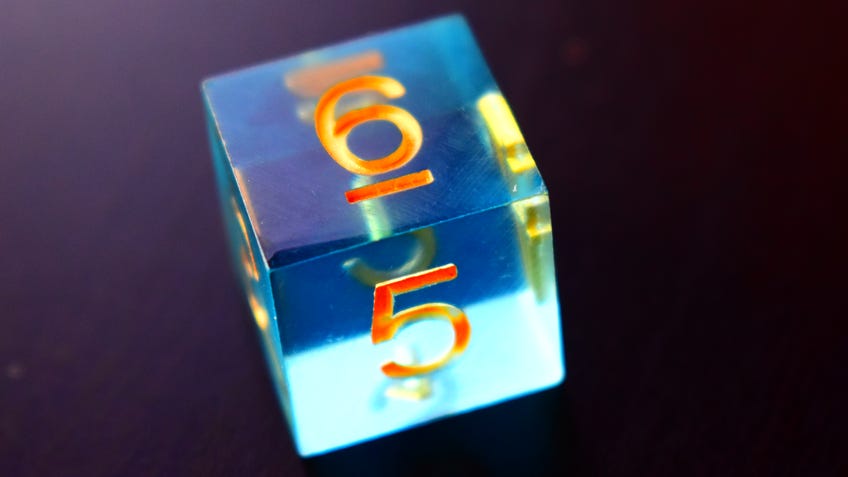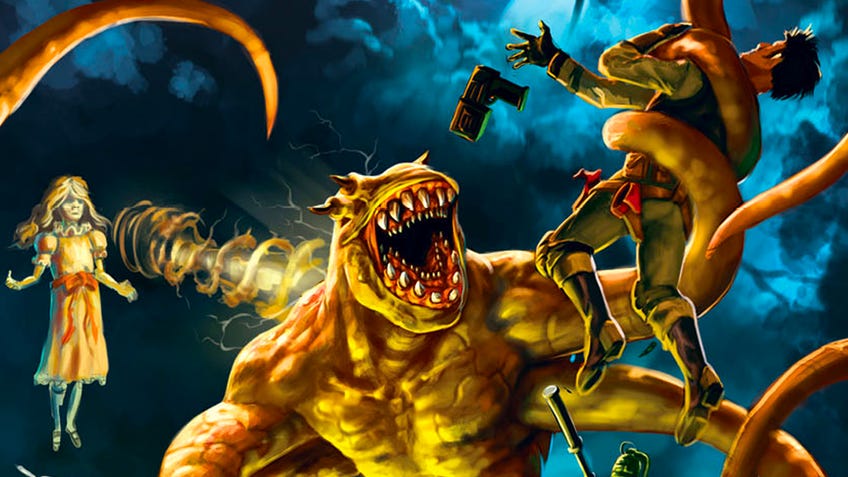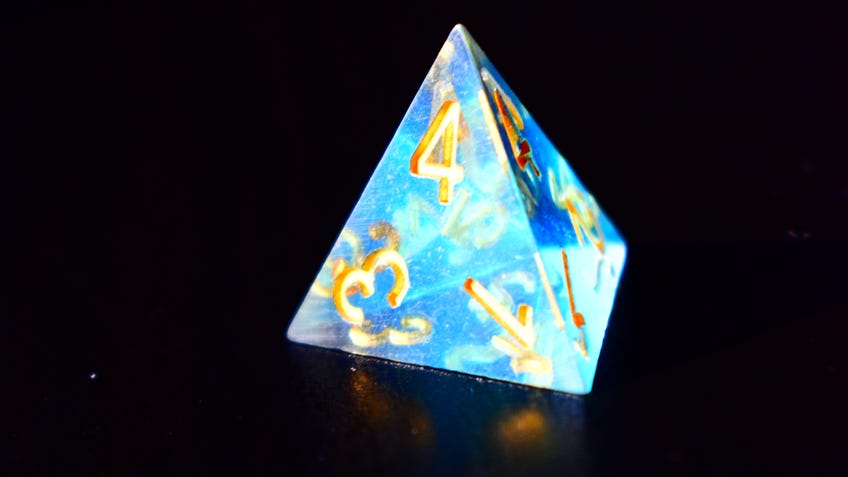When, why and what you roll in tabletop RPGs are just as important to storytelling and theme as a game’s world
Plot resolution.
Do me a favour - grab a 20-sided die (d20), pick a number between 1 and 4 to add to it, and then roll it. If you don’t have a d20, head to Google, type in “roll 1d20” and add your number to whatever it rolls.
I’ve got a number in my head right now you’re gonna compare it to. If your die result plus the number you picked is bigger than the number in my head, you win!
Once you’ve got your result, you can read my number to find out if you won. Scroll below the video to find the answer. (No cheating, now!)
My number is 13.
If you know tabletop RPGs then you’re probably familiar with the process we just went through, but let me explain for those unfamiliar.
Resolution systems are a solid way to establish and focus the themes of a game.
In game-terms, what you just did is often called a “check” - a key part to many games’ dice-based “resolution systems”. That was a pretty straightforward example, something used in Dungeons & Dragons as well as any number of other roleplaying games.
You may not think it if you’re unfamiliar, but resolution systems are a solid way to establish and focus the themes of a game. By changing not only the dice used, but the way they’re used, a game can emphasise specific aspects of whatever kind of story it’s trying to tell.

I’m not here to trash-talk any systems or to say a given system is better than another. Instead, I want to illustrate how something as simple and core as a die roll can change how the player and character relate to each other and the game at hand.
Let’s take the six-sided die (d6). Maybe the most common die shape, a d6 is a cube with 1 to 6 written on each side. You find it in all sorts of common board games, sure, but it’s also everywhere in tabletop RPGs. It’s a shortsword’s damage die, a frequent companion of tables and the only die used in John Harper’s Blades in the Dark.
In Blades, players take on the role of scoundrels with the odds stacked against them. To make a check, players roll a number of dice equal to the number of marks in their chosen action’s rating. So if you’re sneaking, and you have 2 marks in Prowl, you’d roll 2 six-sided dice (2d6). When they make this check, the dice are looked at individually instead of added together. They want any single result to be a 6 (for a success without consequences), but even if they get a 4 or 5 (success with consequences) things aren’t all that bad. Anything lower is a total failure, and the game master can be as harsh on them as they want.
Because of the low amount of dice being rolled, this leads to a lot of pressure on a single check. Things can go pretty bad for the characters pretty quick, so there are systems in place that allow players to bargain or work up to more dice to increase their odds. These aspects work together to create a very tense tooth-and-claw struggle as the players push their characters hoping for the best result possible.
By changing not only the dice used, but the way they’re used, a game can emphasise specific aspects of whatever story it’s trying to tell.
Blades in the Dark’s dice and systems all work together to land the exact themes and tone the game itself wants you to live in as you play. Coincidentally, the actual odds of the dice are against the players in the same way the game’s fiction is. It’s a perfect example of how a resolution system can play with themes.
On the other side of the coin, we’ve got the basics of the Powered by the Apocalypse engine used for games like Michael Sands’ Monster of the Week and Avery Alder’s Monsterhearts 2.
In these games, players are (almost) always rolling 2d6, totalling the results together and adding their stat to it. These rolls are tied to this thing called a “move” that happens when certain triggers occur and provides different narrative and mechanical consequences based on the result of the roll. It’s a very powerful tool, when used well.

Here, the theme and tone the resolution system provides come from the text of the move and discussion around its use. The Hard Move is a great podcast that does design dives into various moves across different games that does a wonderful job of discussing this, so if this is interesting you should check them out.
Here’s a move I came up with to use as an example:
When you react to a situation with reckless violence, roll +Heart.
- On a 10+, describe what you leave in your wake.
- On a 7-9, you also hurt yourself in the process
- On a 6 or lower, you also hurt someone else as a result of your violence
Thanks to the probability of a 2d6 roll being a bell curve maxing out in the 6 to 9 range, the most common results on a move are going to rage the same way (before stats are added). This means, on the move above, the most likely result is that the character is going to hurt themself in addition to whatever other violence they do.
The real legwork we want to look at comes from a few specific things: the specificity of “reckless”, rolling with a stat called Heart and the way the consequences shake out.
The descriptive choice of “reckless” for the violence you perform that triggers this move gives us a lot of information about a situation where it’d be used. It implies a level of anger or fury, and by being tied to a character as moves usually are it also tells us that the character is prone enough to this kind of violence that having a move for it is important.
The language of a game’s mechanics can have profound effects on the stories told.
It also sets this move aside from others that may be about different kinds of violence - this one here is about reckless violence, not planned or tactical. It shapes the scene in a very important way.
Then we’ve got the stat used for this move. A word like “heart” is usually associated with passion, love and intimate things. Why is Heart the stat used for this roll? It tells us about the heat of this moment, it tells us that this move taps into whatever aspect of the character that's most tied to their passions. The reckless violence we’re performing isn’t just fury or muscle - it’s important in some way.

Last, the consequences. No matter what happens in this move, we commit the act of violence. We destroy something. But, the lower our result, the more collateral damage it results in. The order of “hurting yourself” before you “hurt someone else” is important to note. It tells us that the game views hurting someone else in this way as a harsher result than hurting yourself when doing this violence. We also know that, because of the 2d6 bell curve, we’re pretty likely to get hurt every time we make this move.
Powered by the Apocalypse uses a completely different approach to theme and tone than Blades in the Dark or even Dungeons & Dragons, but it’s still great at doing the job in a variety of ways.
The ways dice and the systems that surround them are used in games is important, and worth considering deeply not only during design, but during play. The language of a game’s mechanics can have profound effects on the stories told, and altogether these aspects are powerful tools for everyone at the table.


